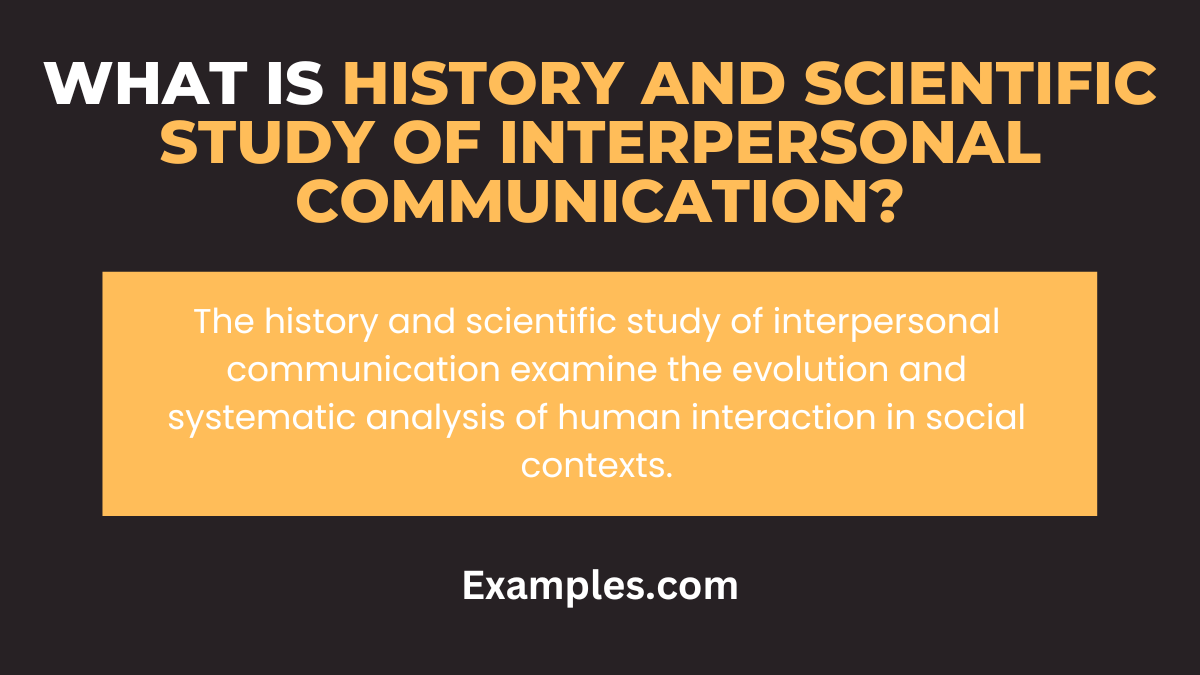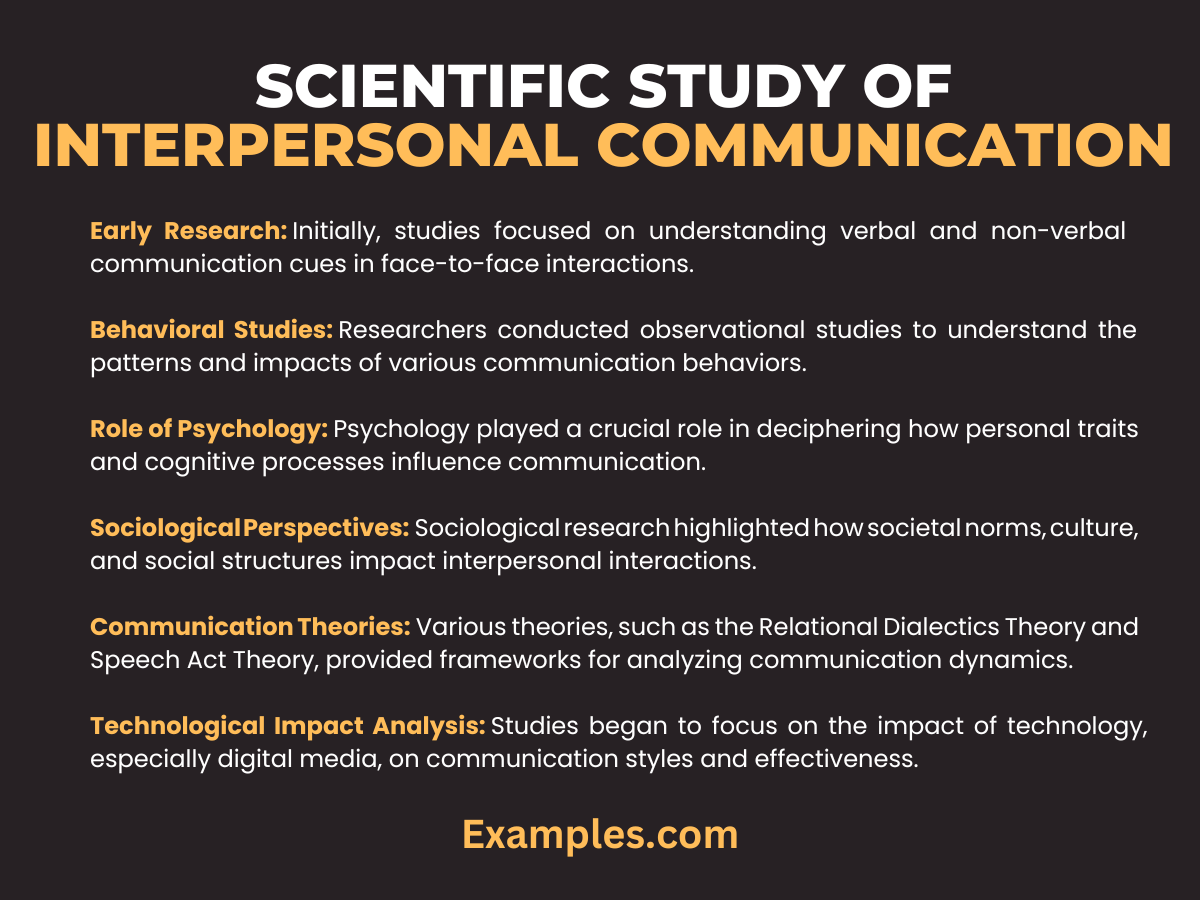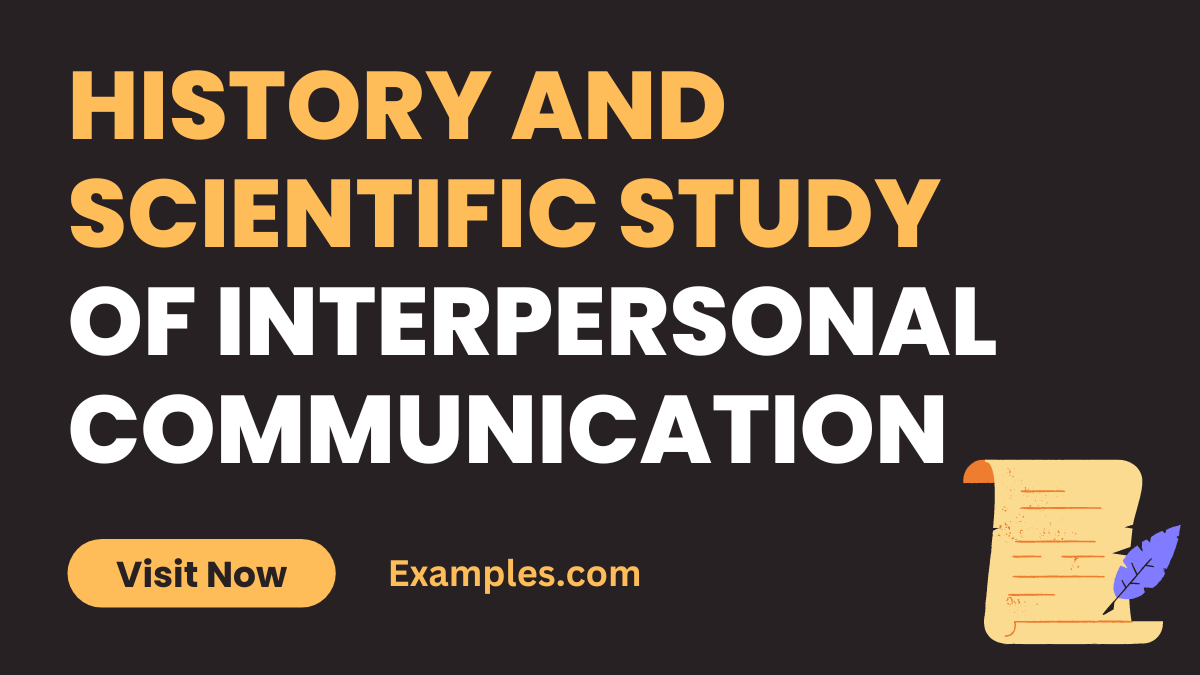10+ History and Scientific Study of Interpersonal Communication Examples
Delve into the intricate world of Interpersonal Communication. This guide offers a comprehensive exploration of its history and scientific study, unraveling the complexity and nuances behind every interaction. Whether it’s verbal, non-verbal, or digital communication, understanding these dynamics is crucial. With practical examples and insightful tips, this guide illuminates the path for anyone keen to master the art of effective interpersonal exchanges, from students to professionals. Discover how Interpersonal Communication not only connects us but also shapes our personal and professional lives.
What is History and Scientific Study of Interpersonal Communication?

The history and scientific study of interpersonal communication refer to the exploration and understanding of how people exchange information, feelings, and meaning through verbal and non-verbal messages in one-on-one or small group settings. Historically, this field has evolved from basic theories of verbal communication to complex understandings of non-verbal cues, social context, and digital communication. Scientifically, it involves researching and analyzing how these interactions affect relationships, decision-making, and social dynamics. This study incorporates various disciplines like psychology, sociology, and communication theory, providing insights into effective communication skills, relationship building, and conflict resolution.
History of Interpersonal Communication
Tracing the history of interpersonal communication involves looking back through centuries of human interaction. While pinpointing exact dates can be challenging due to the broad and evolving nature of communication, key milestones provide a framework for understanding its development.
- Prehistoric Era (Before 3500 BCE): Interpersonal communication began with the earliest humans, primarily through non-verbal means like gestures and expressions, evolving to rudimentary spoken languages.
- Invention of Writing (Around 3500 BCE): The Sumerians in Mesopotamia are credited with developing one of the earliest writing systems, transforming communication from transient spoken words to durable written symbols.
- Classical Antiquity (8th Century BCE – 5th Century CE): Ancient civilizations like the Greeks and Romans refined rhetoric and oratory, elevating verbal communication in public and private life.
- Middle Ages (5th – 15th Century): The spread of literacy and written communication gradually increased, though it was mostly limited to religious and royal institutions.
- Gutenberg’s Printing Press (1440): Johannes Gutenberg’s invention revolutionized communication, making the mass production of books possible and greatly enhancing the dissemination of knowledge.
- Telegraph Invention (1837): Samuel Morse’s development of the telegraph marked the beginning of electronic communication, allowing instant long-distance message exchange.
- Telephone Invention (1876): Alexander Graham Bell’s telephone further transformed communication, enabling real-time voice conversations across distances.
- Radio and Television (20th Century): These mediums introduced mass broadcasting, significantly impacting public and personal communication dynamics.
- Digital Age (Late 20th – 21st Century): The advent of the internet and mobile technology has been pivotal in shaping modern interpersonal communication, introducing platforms like email, social media, and video conferencing.
- Social Media Era (Early 21st Century): Platforms like Facebook, Twitter, and Instagram have become integral to how people interact, share information, and maintain relationships.
Throughout history, interpersonal communication has continually adapted to technological advancements and societal changes, reflecting and shaping human behavior and relationships.
Scientific Study of Interpersonal Communication

The scientific study of Interpersonal Communication encompasses a broad range of approaches and methodologies to understand how individuals exchange information, build relationships, and navigate social dynamics.
- Early Research: Initially, studies focused on understanding verbal and non-verbal communication cues in face-to-face interactions.
- Behavioral Studies: Researchers conducted observational studies to understand the patterns and impacts of various communication behaviors.
- Role of Psychology: Psychology played a crucial role in deciphering how personal traits and cognitive processes influence communication.
- Sociological Perspectives: Sociological research highlighted how societal norms, culture, and social structures impact interpersonal interactions.
- Communication Theories: Various theories, such as the Relational Dialectics Theory and Speech Act Theory, provided frameworks for analyzing communication dynamics.
- Technological Impact Analysis: Studies began to focus on the impact of technology, especially digital media, on communication styles and effectiveness.
- Cross-Cultural Communication: With globalization, research expanded to include cross-cultural communication, understanding how cultural differences affect interpersonal interactions.
- Health Communication: A significant area of study has been health communication, exploring how interpersonal communication influences healthcare outcomes.
- Organizational Communication: Research in organizational settings examines how interpersonal communication affects teamwork, leadership, and organizational culture.
- Future Directions: Emerging areas of study include the influence of AI and machine learning on communication, as well as the ethical implications of virtual and augmented reality in interpersonal interactions.
The history and scientific study of interpersonal communication reveal its dynamic evolution, shaped by technological, social, and cultural changes. Understanding its complex nature, from early oral traditions to digital interactions, is crucial. This guide offers insights and practical tips, empowering readers to navigate and enhance their interpersonal communication skills effectively in various contexts.



